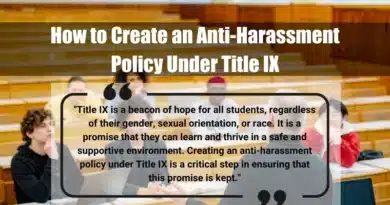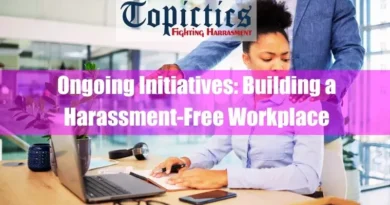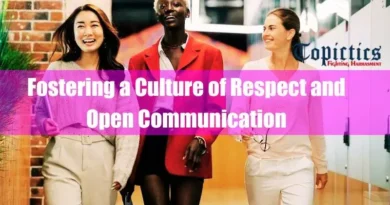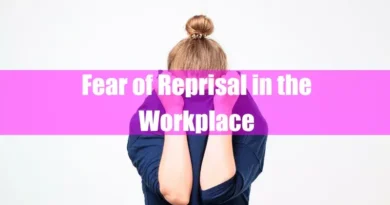Key Takeaways from the article “Microassaults: Everyday Indignities with Lasting Impacts”:
- Understanding Microassaults: Microassaults are deliberate, direct actions that target individuals based on their social identities, such as race, gender, or religion. Distinguishable from microaggressions, they include verbal, nonverbal, and environmental expressions of prejudice and discrimination.
- Impact of Microassaults: Despite their seemingly small nature, microassaults can profoundly affect individuals and communities. They contribute to anxiety, depression, and feelings of isolation, perpetuate negative stereotypes, and hinder the creation of inclusive environments.
- Addressing Microassaults: Combatting microassaults requires both bystander intervention and fostering individual resilience. Strategies include recognizing and identifying microassaults, intervening safely and effectively, building bystander courage, and developing self-care practices while seeking support from allies and communities.
I. Introduction
A. Defining Microassaults: Understanding the Concept
We often encounter subtle yet harmful behaviors that can significantly impact individuals and communities daily. These seemingly insignificant instances, termed microassaults, are brief and commonplace expressions of prejudice and discrimination. It’s crucial to distinguish them from the broader concept of microaggressions. While both contribute to a hostile environment, microaggressions encompass a wider range of behaviors, including microassaults, microinsults (subtle, unintentional forms of prejudice), and microinvalidations (denying or dismissing someone’s experiences or feelings).
Microassaults, on the other hand, are characterized by their intentionality and directness. They are conscious, deliberate actions that target individuals based on their social identities, including race, ethnicity, gender, sexual orientation, religion, disability, or any other group affiliation. These attacks can be verbal, such as name-calling, slurs, or offensive jokes; nonverbal, like gestures, physical intimidation, or dismissive body language; and environmental, manifested through discriminatory practices or the lack of representation in a particular setting.
B. Significance of Studying Microassaults
While seemingly insignificant, microassaults negatively impact individuals with anxiety, depression, and feelings of isolation. They contribute to a climate of intolerance within communities and reflect systemic institutional inequalities. Understanding them allows us to identify these issues and work towards a more equitable society.
By exploring the different forms, impacts, and strategies for addressing microassaults, we can dismantle their harmful effects and create a more inclusive and respectful environment for everyone.
II. Understanding the Different Forms of Microassaults
Microassaults can manifest in various ways, often tailored to the specific target’s identity. Recognizing these diverse forms is crucial for effectively identifying and addressing them.
A. Verbal Microassaults
These are direct and intentional verbal attacks based on someone’s social identity. They can take different forms, including:
- Name-calling and slurs: These are overt forms of verbal abuse used to demean and belittle individuals based on their race, ethnicity, gender, sexual orientation, or other group affiliations.
- Offensive jokes and humor: Using humor at the expense of someone’s identity, perpetuating negative stereotypes, or making light of sensitive topics can be highly offensive and harmful.
- Microinsults disguised as compliments: Seemingly positive comments that contain subtle jabs or undermine someone’s identity and capabilities fall under this category. An example could be, “You’re so articulate for a [insert group affiliation].”
Examples:
A student of color is repeatedly called derogatory names and excluded from group discussions in class. This experience can lead to feelings of isolation and anxiety and negatively impact their academic performance.
A colleague tells a woman, “You are surprisingly good at your job for a woman,” perpetuating the stereotype that women are not as competent in certain fields. This type of microinsult can undermine her confidence and sense of belonging in the workplace.
Specific Forms:
It’s important to distinguish between microinsults and microassaults in verbal communication. While both involve harmful messages, microinsults are often unintentional and subtle, whereas microassaults are deliberate and direct. For instance, saying, “Wow, you speak English so well!” could be a microinsult, implying surprise based on someone’s race or ethnicity, while calling someone “an [offensive term]” is a clear microassault.
Also, read:
- Demystifying Harassment and 16 Types of Harassment
- Cultural Norms and Harassment: Understanding the Link
- The Role of Empathy in Harassment
- How to Provide Anti-harassment Training in the Workplace
B. Nonverbal Microassaults

These involve nonverbal communication that conveys prejudice and disrespect toward another individual. Examples include:
- Gestures and body language: Dismissive gestures like rolling one’s eyes, crossing arms, or invading personal space can communicate negative attitudes and contribute to a hostile environment.
- Physical intimidation: Threatening body language, such as standing too close or making aggressive gestures, can be a form of microassault, creating fear and discomfort.
- Avoiding eye contact or ignoring someone: Deliberately ignoring someone’s presence or refusing to acknowledge them can be an act of exclusion and disrespect.
Examples:
A person with a disability is repeatedly denied eye contact and spoken over during conversations, sending a message of disregard and devaluation. This can negatively impact their sense of self-worth and participation in social interactions.
A member of a religious minority experiences hateful glares and physical intimidation from strangers on public transportation. This creates fear and anxiety, affecting their sense of security and belonging in the community.
Specific Forms:
Microaggressions can also manifest nonverbally through discriminatory clothing choices, displaying symbols associated with hate groups, or using inappropriate cultural appropriation. These actions, though not directly spoken, carry harmful messages and perpetuate stereotypes.
Also, read:
- Clarifying Consent in Professional Environments
- Understanding Unwanted Advances
- Explaining Sexual Favors Considering Harassment
- Understanding Power Dynamics
III. The Impact of Microassaults

While seemingly small and inconsequential, microassaults can have a significant and lasting impact on individuals and communities. Understanding these repercussions is crucial for recognizing the gravity of the issue and fostering a more inclusive environment.
A. Individual Experiences
The constant exposure to microassaults can lead to a range of negative experiences for individuals, impacting their well-being on multiple levels:
1. Psychological Effects:
Research demonstrates a strong link between microaggressions and various mental health concerns. Individuals who experience microassaults are more likely to experience anxiety, depression, and lowered self-esteem. These negative emotions can further impact their ability to cope with stress and navigate daily challenges.
2. Emotional Impact:
Microassaults can evoke various negative emotions, including anger, frustration, humiliation, and fear. These emotions can be overwhelming and lead to feelings of isolation and withdrawal from social interactions.
3. Social Consequences:
Repeated exposure to microassaults can create a hostile environment where individuals feel excluded, unsafe, and unwelcome. This can lead to difficulties in building relationships and a sense of not belonging, ultimately hindering one’s ability to thrive in various social settings.
B. Community and Societal Effects:
The effects of microassaults extend beyond individual experiences, impacting entire communities and contributing to broader societal issues:
1. Perpetuation of Negative Stereotypes and Prejudice:
Microassaults, when left unchecked, can normalize negative stereotypes and prejudice within communities. By constantly witnessing or experiencing these behaviors, individuals may internalize these stereotypes, reinforcing harmful beliefs and perpetuating the cycle of discrimination.
2. Normalization of Discriminatory Behavior:
Normalizing microassaults creates an environment where discriminatory behavior becomes commonplace and tolerated. This can lead to desensitization, making it easier for individuals to engage in or witness discriminatory acts without feeling remorse or recognizing the harm they inflict.
3. Hindrance to Creating Inclusive and Equitable Environments:
The constant presence of microassaults prevents genuine inclusivity and equity. It creates a barrier to meaningful participation and hinders individuals from reaching their full potential due to feelings of isolation, exclusion, and fear.
By understanding the individual and broader societal impacts of microassaults, we can begin to address these harmful behaviors and work towards creating more inclusive and respectful environments for everyone.
Also, read:
- Explaining the Fear of Retaliation
- How to Create an Anti-Retaliation Policy
- Explaining DE&I Initiatives: An Ultimate Guide
- Ombudsman: A Comprehensive Guide
IV. Addressing Microassaults

Microassaults, while pervasive, are not inevitable. By equipping ourselves with strategies and fostering individual resilience, we can create a shift towards a more inclusive and equitable environment.
A. Bystander Intervention Strategies
When witnessing a microassault, intervening can make a significant difference for the target and send a powerful message against intolerance. Here are some key strategies:
1. Recognizing and Identifying Microassaults:
The first step is to be able to identify microassaults in their various forms – verbal, nonverbal, and environmental. This involves understanding the dynamics of discrimination and developing sensitivity to subtle cues and behaviors that might otherwise go unnoticed.
2. Safe and Effective Ways to Intervene:
Depending on the situation and context, various ways exist to intervene safely and effectively. Some options include:
- Directly confronting the perpetrator: This approach requires careful consideration and should only be attempted in a safe environment when you feel comfortable doing so. Expressing disapproval of the behavior and offering support to the target can be impactful.
- Offering support to the target: Regardless of the specific strategy used, offering support and validation to the target is crucial. This can involve acknowledging their experience, expressing empathy, and offering assistance if needed.
- Reporting the incident: Reporting the incident to a trusted individual or relevant authority figure can be helpful, especially in cases of repeated or severe microassaults.
3. Building Bystander Courage:
Recognizing the bravery it takes to intervene and providing training and resources can empower individuals to become active bystanders and help create a culture of collective responsibility for upholding inclusivity and respect.
Also, read:
- 20 Quid Pro Quo Harassment Examples and How to Stop Them
- How to Prove Quid Pro Quo Harassment: 13 Powerful Evidences
- Quid Pro Quo Harassment vs. Hostile Work Environment Harassment
- Is Quid Pro Quo Illegal? 21 Accused Celebrities Examples
B. Fostering Individual Resilience

While addressing microassaults at the source is crucial, individuals who experience such behavior can also develop strategies to increase their resilience and well-being:
1. Recognizing the Harm and its Source:
It’s important to understand that microassaults do not reflect the target’s worth or capabilities. Recognizing the harm as external and arising from prejudice, not individual shortcomings, is crucial for maintaining self-esteem.
2. Self-care Strategies:
Engaging in self-care practices like mindfulness and relaxation techniques and connecting with supportive individuals can help individuals cope with microassaults’ emotional and psychological impact. Building a strong support system allows individuals to share their experiences and receive validation and encouragement.
3. Seeking Support from Allies and Communities:
Connecting with allies and communities who share similar experiences can provide individuals with a sense of belonging, understanding, and strength. Engaging in collective action and advocacy can further empower individuals to address systemic issues and promote positive change.
By adopting these strategies for both bystander intervention and individual resilience, we can create a collective response to microassaults, fostering a culture of respect and inclusivity where everyone feels safe and valued.
Also, read:
- Explaining Quid Pro Quo Harassment Under Title IX
- Quid Pro Quo Harassment: What It Is? Know Everything
- Sexual Quid Pro Quo Harassment: A Comprehensive Guide
- Workplace Quid Pro Quo Harassment: An Ultimate Guide.
V. Conclusion
Throughout this discussion, we have explored the concept of microassaults, delving into their various forms, their significant impact on individuals and communities, and the strategies we can utilize to address them.
Addressing microassaults requires a collective and ongoing effort. We must strive to:
- Educate ourselves and others about microaggressions and their impact.
- Develop the courage to speak up when we witness microassaults and foster a culture of bystander intervention.
- Embrace and celebrate diversity by creating inclusive environments where everyone feels valued and respected.
- Advocate for systemic changes that address the root causes of discrimination and inequality.
By taking these steps, we can create a world where microassaults become a relic of the past, replaced by an environment where respect, understanding, and inclusivity prevail.
Also, read:
- 13 Powerful Resources for Victims of Quid Pro Quo Harassment.
- Victims of Quid Pro Quo Harassment: 27 People at High Risk.
- 26 Potential Perpetrators of Quid Pro Quo Harassment
- 10 Hazardous Personal Effects of Quid Pro Quo Harassment
VI. FAQs
A. What is the historical context of microassaults?
While the exact term “microassaults” emerged in the late 20th century, the concept of subtle forms of prejudice and discrimination has existed throughout history. Understanding the historical struggles of marginalized groups can provide context for the ongoing fight against microaggressions and microassaults.
B. What are the legal and ethical implications of microassaults?
While microassaults may not always be legally actionable, depending on the specific context, they can create a hostile environment and violate anti-discrimination laws in certain situations (e.g., workplace harassment). Additionally, engaging in microassaults often goes against ethical principles of fairness, respect, and inclusivity.
C. How does intersectionality play a role in microassaults?
Individuals who belong to multiple marginalized groups may experience compounded effects of microassaults based on their intersecting identities. For example, a woman of color might face both sexism and racism in a microaggression, making the impact even more significant.
D. Can you provide some specific examples of microassaults?
Microassaults manifest in diverse ways: verbally through derogatory names, comments like “go back to your country,” or backhanded compliments; nonverbally through dismissive body language, being ignored, or having personal space invaded; and environmentally through lack of cultural representation or exposure to discriminatory symbols.
E. Where can I find resources and support if I experience or witness a microassault?
Several resources can support and guide those who experience or witness microassaults. These may include mental health professionals, advocacy organizations dedicated to specific identity groups, or online communities focused on coping with microaggressions.
F. How can I differentiate between microassaults and microaggressions?
Although both microassaults and microaggressions involve subtle forms of prejudice and discrimination, they differ in intentionality: microassaults are deliberate and direct discriminatory actions, while microaggressions can be unintentional, subtle, and often unconscious behaviors or comments, existing in verbal, nonverbal, or environmental forms.
G. What are some of the challenges in addressing microassaults?
Recognizing, addressing, and overcoming the challenges of microassaults is crucial. Their subtle nature can make them hard to identify, the perpetrator may be unaware of the harm they inflict, and fear of retaliation can silence both targets and witnesses. Despite these difficulties, fostering awareness and developing effective strategies are essential to combatting microassaults and creating a more inclusive environment.
H. How can I develop my cultural competency to understand better and respond to microassaults?
Cultivating cultural competency requires a three-pronged approach: actively learning about diverse cultures and histories to understand different perspectives, critically examining your own biases and privileges to identify blind spots, and engaging in respectful dialogue with individuals from various backgrounds to foster empathy and understanding.
I. What are some tips for effectively intervening when witnessing a microassault?
Witnessing a microassault requires careful consideration. Prioritize everyone’s safety and decide your approach. You can directly confront the perpetrator, support the target, or report the incident. Focus on the specific behavior and its impact using “I” statements to avoid accusations. Be prepared for possible defensiveness and maintain a calm and respectful tone during the interaction.
J. How can I build resilience to cope with microassaults?
To build resilience towards microassaults, practice self-compassion by acknowledging that the harm isn’t your fault. Engage in activities that promote your well-being, surround yourself with supportive individuals, and seek professional help if needed to manage stress and cope with the emotional impact of these experiences.









